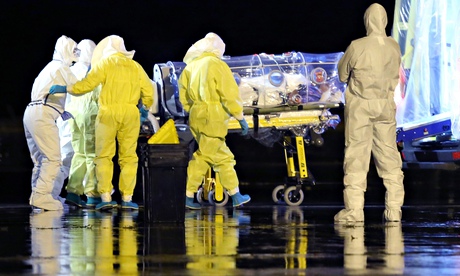
The news that a nurse in a Spanish hospital has been infected with the Ebola virus by a patient she was helping to treat will greatly dismay those trying to reassure people in Europe and the US that they are safe from the disease.
This should not happen. In countries with sophisticated healthcare systems, such as Spain and the US, it ought to be almost impossible for a nurse to become infected once the hospital is aware that it has an Ebola patient.
In Dallas, ambulance workers were put at risk and are now effectively in quarantine because of ignorance: the hospital did not know that Thomas Duncan might be infected with the virus when they responded to the call to transport a sick man.
But in Spain there does not seem to be that excuse. The priest Manuel Garcia Viejo, whom the nurse was helping to treat at Madrid’s Carlos III hospital, had been repatriated from Liberia precisely because he had Ebola.
The virus is transmitted from one person to another through bodily fluids and the sicker the patient becomes, the higher the levels of virus in those fluids, which include blood, urine and vomit. The sick are more dangerous to people nursing them than to almost anybody else. But strict infection control procedures work in the challenging circumstances of west Africa most of the time and should not fail in Europe. Any nurse, doctor or anyone else who has contact with a patient must be in a protective suit, complete with gloves and face mask. The patient will be in isolation and strict hygiene and sanitation measures will be in force.
Among the urgent questions now facing the Spanish health authorities will be whether the nurse treating the priest might have removed or failed to put on any part of this protective clothing. Experts will hope there is a rapid answer to that, because there is a real danger otherwise that scare stories, without any scientific evidence, will circulate on the internet.
Scientists and doctors have repeatedly said that Ebola is not transmitted through water droplets in the air from coughs and sneezes. It does not have a respiratory route for infecting people. It will be important now to ascertain exactly what happened in Madrid so that any such rumours can be quickly scotched.
